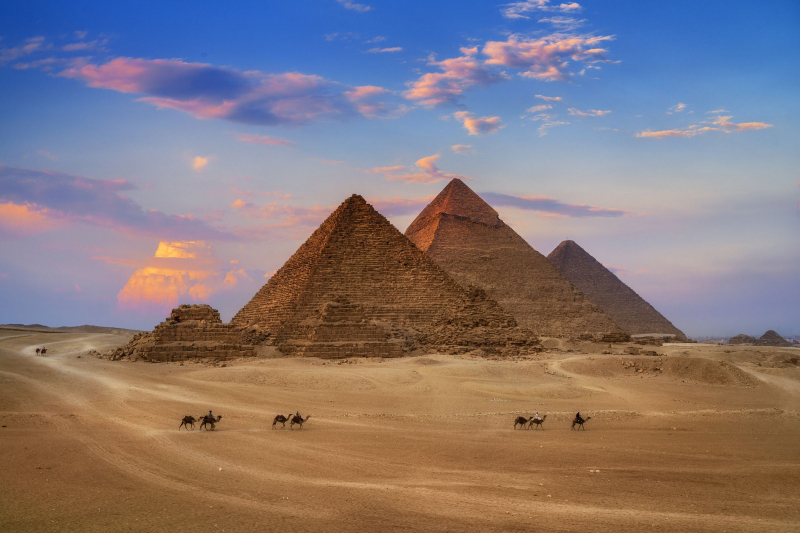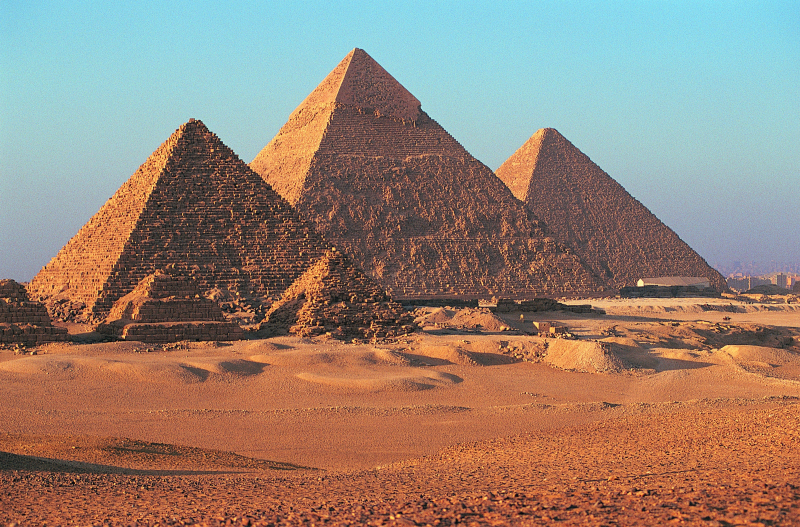The Pyramids
Without discussing the Egyptian pyramids, no investigation into the major historical riddles that were barely mysteries is complete. People have wondered for years how these marvels could have been built by a culture that had no idea of machines or contemporary building methods. The belief that aliens must have visited Earth to help in their building has been the subject of movies, books, and television programs. However, that response is hardly scientific and is unquestionably disrespectful to the memories of those whose blood, sweat, and tears went into the actual construction.
It is certainly difficult to explain how ancient Egyptians were able to move 2.3 million limestone slabs that, on average, weighted 2.5 tons. How is that even possible? Some items needed to travel more than 500 miles. The Great Pyramid alone is thought to have taken roughly 20 years to build. 20,000–30,000 workmen, according to Egyptologists, were required to complete the project, despite Herodotus' allegation that 100,000 people were required. By any reasonable standard, it was monumental.
Its methodology has long confounded historians. There had to be a better way if you don't want to accept aliens as the explanation, even though it looked completely impossible. Based on wall murals found in the tomb of Djehutihotep, scientists believe they have the answer.
A person is depicted in the artwork standing in front of the same kind of wooden sledge that was used to move the large stone slabs. A physics professor at the University of Amsterdam decided to test how a wooden sledge moved over sand after viewing the image. When the sand is dry, the sledge ploughs through it until a buildup in front causes the sledge to slow down. The piles in front finally disappeared after wetting the sand, and the sledge moved with little opposition.
The idea is the same as when making a sandcastle. There isn't any water, and sand is useless for construction. Water in excess results in mud. But with just the appropriate quantity of water, sand sticks to itself like glue and forms the ideal bridge for crossing.
It would require half as many workers to push the same amount of stone with the exact amount of water on the sand. It's likely that the Egyptians also applied thin desert clay coatings. It produces the ideal lubricant when the proper moisture is present. In the completed pyramids, there is traces of it between the stones, showing that it was employed to aid attain the ideal final position.












